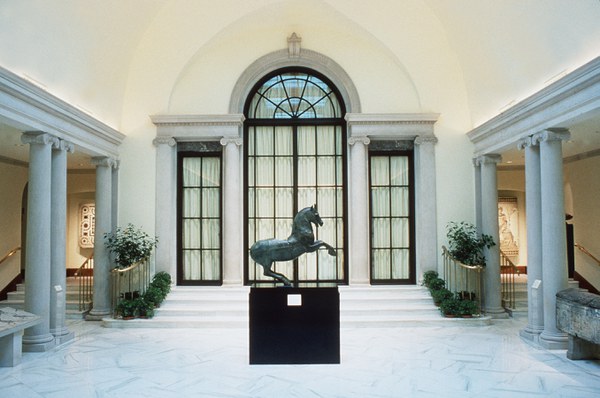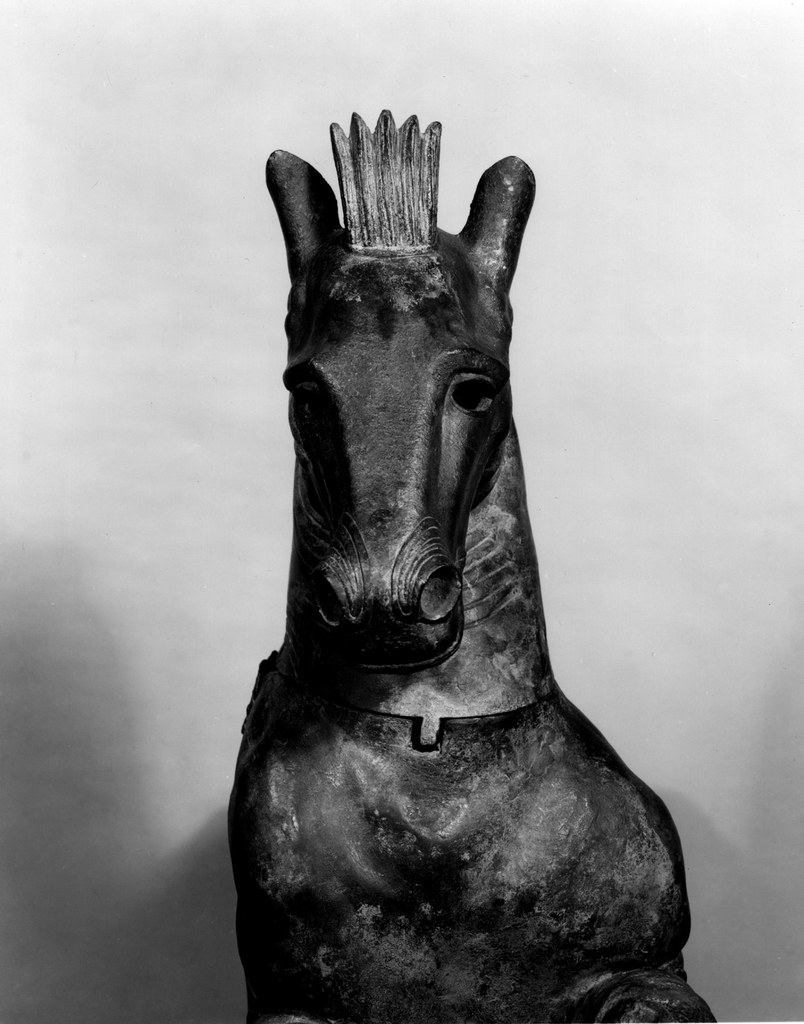The bronze Statue of Rearing Horse, a Dumbarton Oaks icon and longtime fixture of the Courtyard, is on the move. After an extensive conservation examination to determine its stability and the careful construction of a custom-designed crate to ship it, the sculpture traveled to the Metropolitan Museum of Art in New York, where it is featuring in the Met’s major spring exhibition, The World Between Empires: Art and Identity in the Ancient Middle East, beginning March 18.
The late 2nd- to 3rd-century horse appears to breathe forcefully through its wide nostrils, flexing its muscles in anticipation of explosive movement. Former Byzantine Collection Assistant Curator Stephen Zwirn wrote that “the sculptor has succeeded in the rare feat of displaying the horse’s dynamic character by capturing the fleeting moment between action and elegant form.” But it was not always so arresting; the sculpture was discovered in Yemen in more than 80 pieces. Following its artful reconstruction, it was mounted by the prominent early 20-century art dealer Joseph Brummer, from whom the Blisses acquired the piece.
Later archaeological excavations unearthed fragments of a matching horse, confirming the mention of two horses and riders in an incised inscription in Himyaritic, an ancient language of southwestern Arabia, on the horse’s shoulder. The pair of horses likely flanked—symbolically protecting—the entrance to a temple. Their riders may have been figural adaptations of the Roman gods Castor and Pollux.
The World Between Empires sheds light on that original context by bringing together 190 works created, like the horse, in the geographical space between the Roman and Parthian Empires (ca. 100 BCE–250 CE). Focusing on the role art played in shaping the cultural identities of cities and their inhabitants in that liminal space, the exhibition also examines contemporary issues surrounding the destruction of art and artifacts in that region today.

The Met’s curators described the Dumbarton Oaks statue as “arguably the most important South Arabian sculpture held outside Yemen itself,” asserting that it will be “the central focus of our treatment of the region.” While the museum team is very glad to participate in this major exhibition, preparing the horse for travel was no easy task. As Collections Manager and Registrar Joni Joseph explained, “a broader public will marvel over the Dumbarton Oaks bronze horse and be none the wiser to the many hands, skilled professionals, and time commitment invested in bringing the sculpture to exhibition.”
Statue of Rearing Horse will return to its place in the Courtyard at Dumbarton Oaks following our fall 2019 special exhibition, Ornament: Fragments of Byzantine Fashion.
Samuel Shapiro is a Postgraduate Curatorial Fellow at Dumbarton Oaks.


